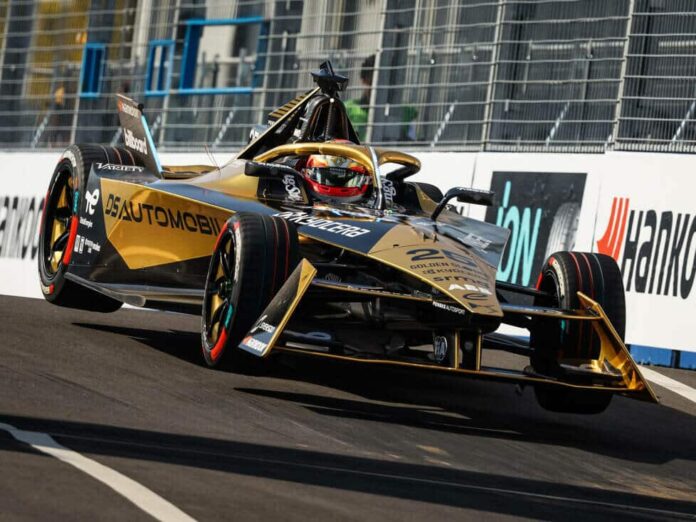Frustrating result for DS-Penske at the inaugural Tokyo E-Prix with Jean-Eric Vergne and Stoffel Vandoorne outside the top 10 – looking to the future
The first Japanese weekend in Formula E history, the inaugural Tokyo E-Prix, allowed Jean-Eric Vergne and Stoffel Vandoorne to further refine their DS-Penske electric cars. However, battery problems marred the French-American’s performance in the Land of the Rising Sun.
Although the weather conditions on the eve of the race were anything but ideal, the first Tokyo E-Prix was a success from an organizational point of view. Heavy rain, which had fallen by lunchtime on Friday, merely prompted the drivers to be cautious in the two free practice sessions because the street circuit was not yet completely dry.
For DS-Penske, it was not the rain that caused problems for Stoffel Vandoorne, but the battery of his electrically powered formula racing car. This is a component that is standardized for all Formula E cars and had to be replaced due to the defect.
Fortunately, the sun came out on Saturday. Although the track was still damp in places during morning practice, the grip level was much more consistent than on Friday. This allowed the set-up of the cars to be fine-tuned.
The two DS Penske drivers, who were in caution mode, lined up in the midfield of the timesheets. Jean-Eric Vergne, who was not yet at his best in the first sector of the track, finished the second free practice session in P9, team-mate Vandoorne in P11.
In qualifying, both DS E-TENSE FE23s drove in Group B, but failed to make it through to the quarter-finals. Vandoorne, who was still plagued by battery problems, had to have the battery replaced again
A race that could have worked out
The two DS Penske drivers started the race on Saturday afternoon from grid positions 13 (Vergne) and 18 (Vandoorne). They knew that they would have to use all their experience to make up places. But it wasn’t easy to find grip on the bumpy street circuit, where a slip can even lead to the cars taking off.
Fortunately, energy management is an effective lever for those who know how to use it properly. In this context, the duo of driver and race engineer is very important. Towards the end of the first third of the race, Vergne could be seen waiting for the drivers behind him to use their second attack mode before making his own
This strategy paid off, as “JEV” came within reach of the points, while Stoffel Vandoorne settled between P12 and P17. The Belgian’s hopes of finishing in the top 10 were not yet extinguished, especially as there was still an attack mode to be used. However, an accident between Nyck de Vries (Mahindra) and Lucas di Grassi (Abt-Cupra) led to the safety car coming out.
This reduced all the gaps. The neutralization of the race led to the race being extended by two laps. This in turn meant that the positions were quickly taken to ensure that the remaining energy would get them to the finish.
Vergne eventually crossed the finish line in eleventh, Vandoorne in 16th, a frustrating end for DS-Penske and confirmation that Formula E can be cruel at times.
The double-header at the permanent circuit in Misano (Italy) in two weeks’ time (April 13/14) will be the next opportunity for the team to demonstrate its true level of performance.







